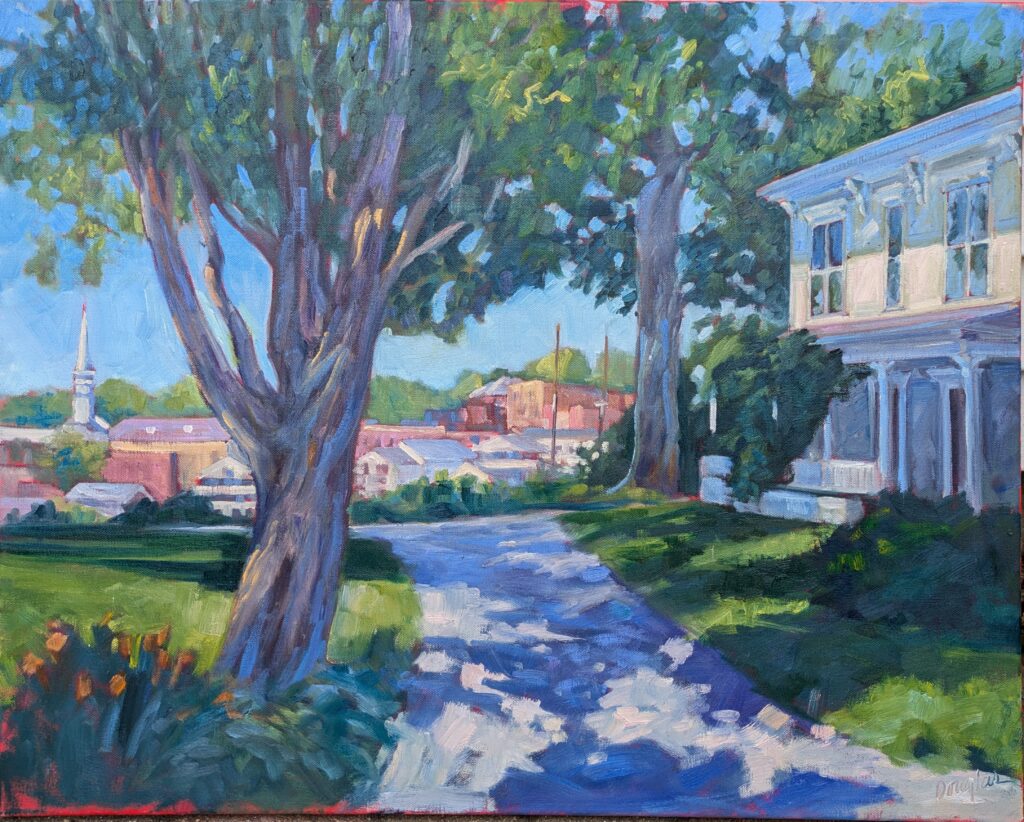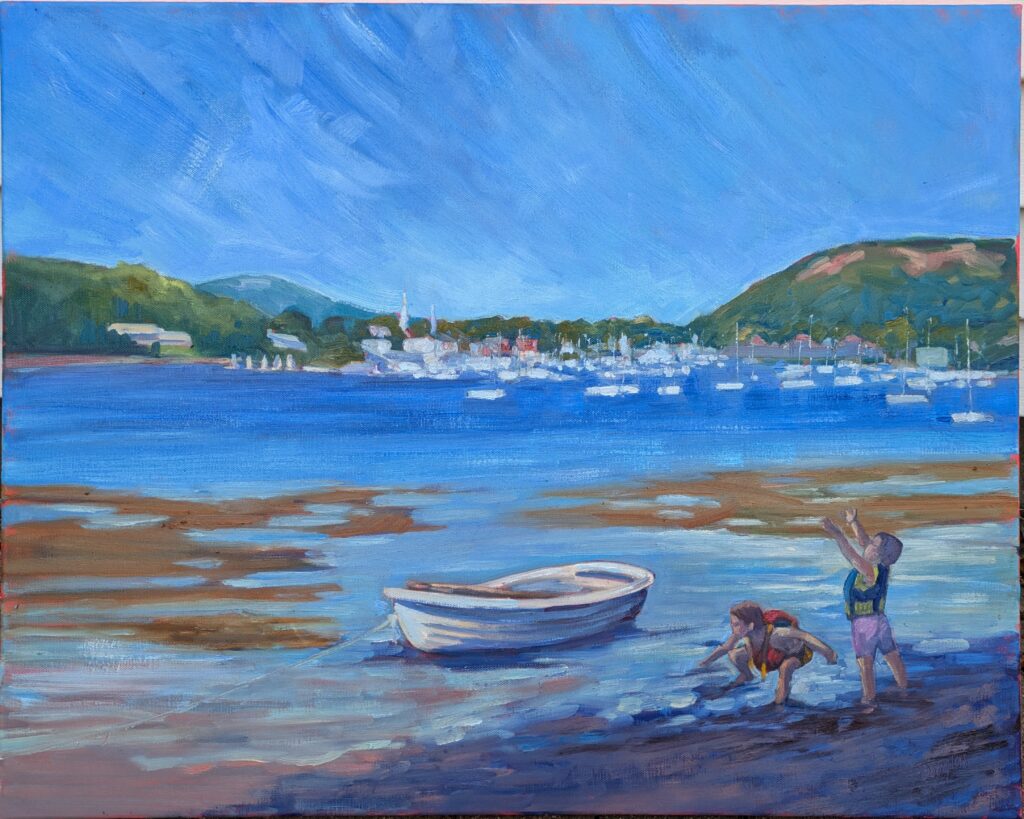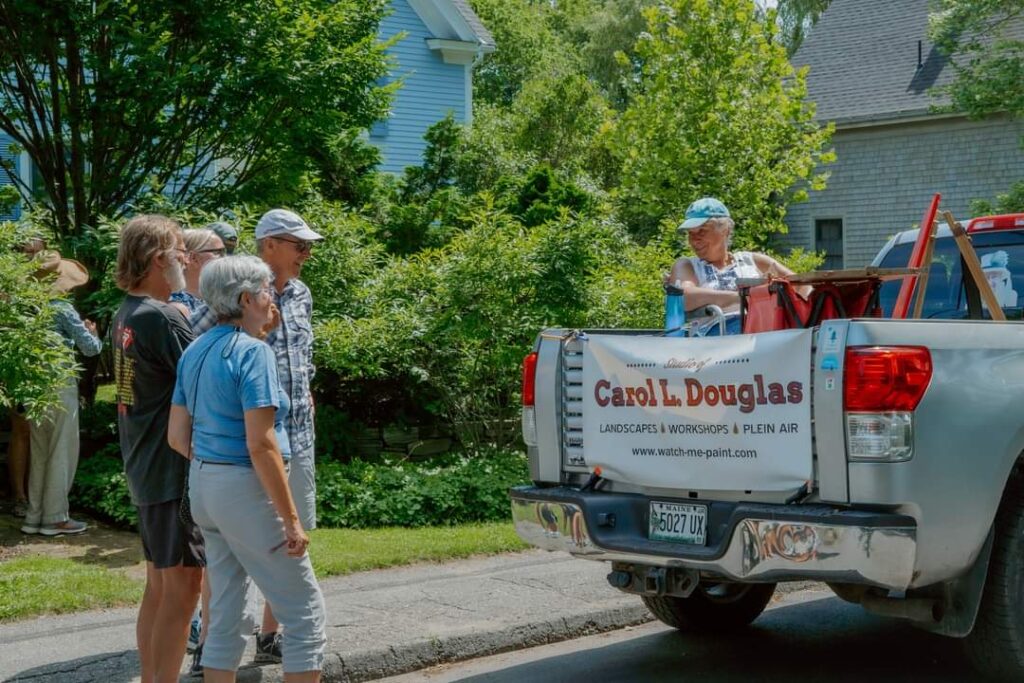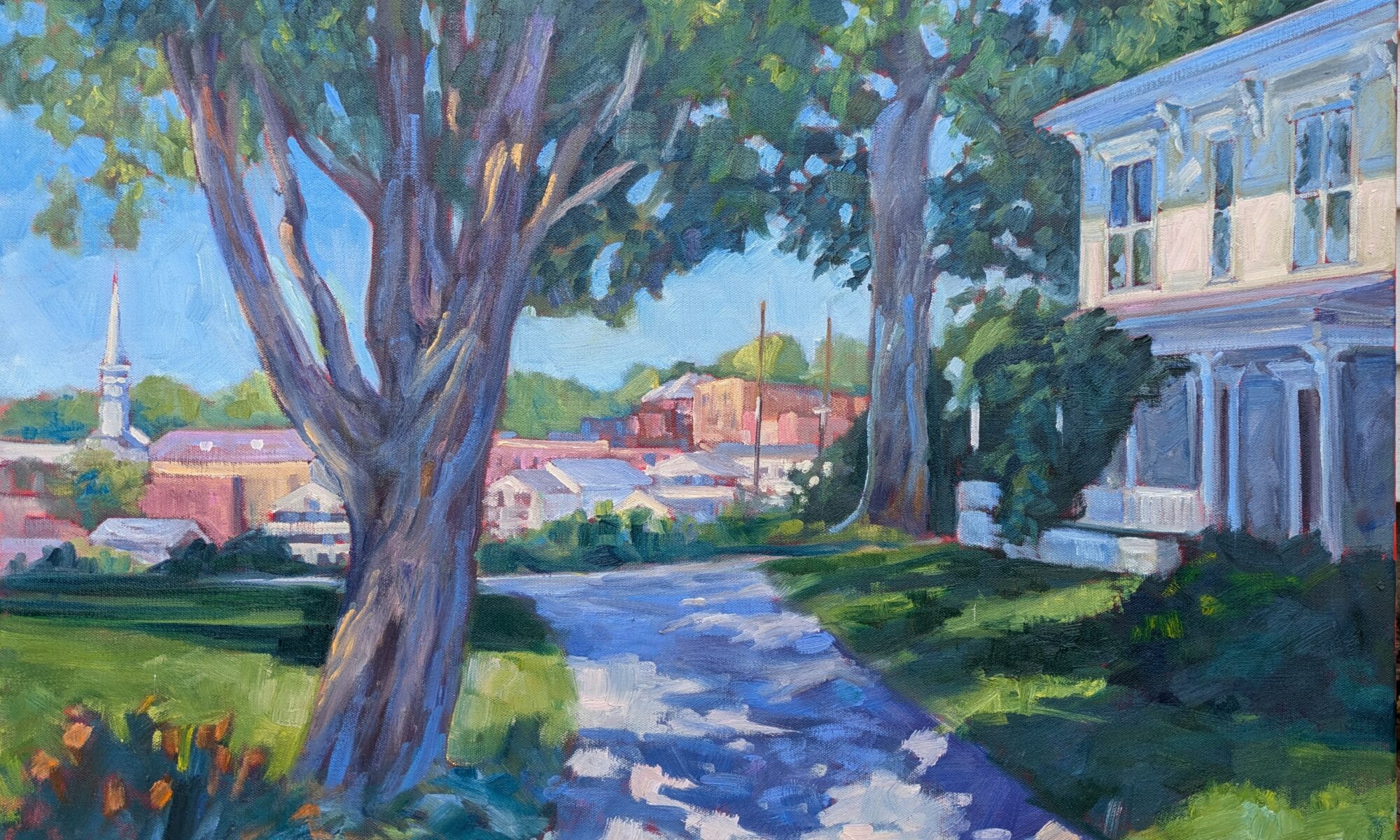
I started writing this in the shade at the Camden Public Library, in the short interstice between delivering paintings and the start of this year’s Camden on Canvas auction. By the time you read this it will be all over but the shouting, but at this moment I don’t know whether I made the right choice.
My two paintings are both indirect views of Camden Harbor. On Friday, I rowed out to Curtis Island, intending to paint Colin Page’s dinghy, but I was sidetracked by kids playing in the surf. On Saturday, I painted on Sea Street from the bed of my pickup truck. Only one painting is allowed in this auction. Although I was inclined to choose Sea Street, I brought both paintings to the amphitheater so I could pother until the last possible minute.
Björn Runquist simplified matters by doing only one piece in the 2.5 days we had to paint. Ken DeWaard made it extremely difficult on himself by painting four. Two or three is more typical, and then the artist has to narrow it down to one.

This weekend I introduced Ken to the word dithering, about which I wrote on Friday. “So, it’s just like complaining, right?” he countered. No, it’s when the general confusion in your mind starts bubbling out your mouth, I said. In fact, it means to vacillate indecisively. And it’s so easy to do when you choose a painting for an auction, online jurying, or any other situation where the stakes are high.
There is a difference in how artists and non-artists see paintings
Artists make judgments about color, composition and draftsmanship (and we all have our own hobby-horses). We don’t necessarily care as much about subject as our buyers do. For collectors, sentiment, color and the painting’s place in their home are real considerations.
Why don’t you just ask a lot of non-painters then?
It’s tempting to start polling people, and they can give you insights into your work. However, the more people you ask, the less consensus you’ll have. And whatever the last person said, is what will stick in your mind. That’s no way to decide.

The one on which you worked the hardest isn’t always the best
I’m always enamored of the tough ones, because I have the greatest investment of time, thought and emotion in them. But these, paradoxically, can move the audience the least. And it’s simply not true that the ones you whip off are worth less; they’re the sum of all the work in every painting that’s gone before.
We’re not always the best judges of our own work
I can analyze my own work using formal criticism, but that doesn’t take into account the audience’s emotional response to my work, or my own emotional blind spots.
There is no right answer
In the end, neither of my paintings were ‘bad.’ I can speculate on what the other painting might have netted at auction, but nobody ever really knows. The auction is now over; I was satisfied with the price my painting netted, and I’ll put the other one in my own gallery as soon as I get a frame on it.
Reserve your spot now for a workshop in 2025:
- Advanced Plein Air Painting, Rockport, ME, July 7-11, 2025.
- Sea and Sky at Acadia National Park, August 3-8, 2025.
- Find Your Authentic Voice in Plein Air, Berkshires, MA, August 11-15, 2025.
- Immersive In-Person Fall Workshop, Rockport, ME, October 6-10, 2025.


Which painting did you choose? Great blogpost!
Sea Street.
Thx for sharing your process! Both are beautiful but I think you picked the right one!
I like your painting perch on the truck! Brilliant. Keeps folks from looking over your shoulder and commenting.
FTR, it’s entirely possible to dither inaudibly. I do it all the time.
Congrats, nice piece as always!
Another great topic, Carol. This can be a real conundrum, choosing. I’d have picked Sea Street as well. The public definitely responds differently than I do regarding preferences. When another artist comes in my booth and selects my own “best picks” I feel so validated, but other people’s surprising favorite just reflects the great diversity of experiences that move us. All good!